Well, maybe that is overstepping...
I will begin with photos from June 27 of the Saltmarsh Sharptail Sparrow:
Today's quarry in the same area was the Seaside Sparrow. This little fellow teased me no end. He sat up on the same log as the above photo, then flew right in front of me to a reed that I could barely point the camera at without significantly changing my position which would have, of course, spooked him away. Several times he teased me thus. While this isn't the greatest of photos, it was the best I managed of him today.
The Saltmarsh Sharptail and the Seaside nest in the same marshes, exhibit similar behaviors and have very similar calls. The distinction is that the "sharpie" has the apricot-colored eyebrows and lower cheeks and a distinctly streaked breast, while the seaside has a spot of yellow on the bridge and a less-streaked breast.
Next up we have an immature Great Egret. Normally this bird wouldn't be a standout, but this one caught my eye.
You can tell that he's an immature by the dark colors on his head and neck. Yawn. But what is that in his beak? It is a small flounder or other flatfish. This bird was trying to get the fish into position to be swallowed for over five minutes when I gave up and left! He knows he has a tasty morsel, but has no clue how to get it down the gullet.
I hope he eventually had his meal!
The 28th of June yielded several keepers. First up is the Cedar Waxwing:
In years past the Waxwing has been an elusive target. This year they are plentiful and accessible. Interestingly, I recall that normally their tail tips are yellow, while this year many of them are red. This trait in "Sibley" is noted as an adult variant.
Also on the 28th:
This Willow Flycatcher struck a nice pose. In years past the flycatchers were relatively scarce, but this year are present in significant numbers. That's a "Good Thing" as, together with the various swallows and Purple Martins, they help keep the insects at bay.
Next, forgive me for posting a few images of the Yellow Warbler. This bird is such a cutie and has a very pleasant song. And, he poses.
Please note that the first and fourth photographs are not the same.
Fast-forward to July 2. A couple of otherwise mundane birds, but still interesting when photographed under the right conditions.
American Robin:
The Herring Gull:
Normally I don't pay much attention to gulls. In fact, they can be an annoyance when you live close to the shore. But, occasionally, I am drawn to a pose, a visage. It is then that the shutter goes "click click click." In regards to the Herring Gull, I love the eye.
The relative surprise for this day was the Brown Thrasher. I had discovered a Cedar Waxwing nest, and was awaiting the re-emergence of either the adult or the juvenile. I had spotted them nearby, with the adult picking a berry and placing it into the mouth of the juvenile. They failed to repeat the behavior, but I had noted where they disappeared into a tree. While watching that location, I noticed a disturbance underneath, and spied the Thrasher.
Today was quite a day. We'll start with the Banded Kingfisher.
This bird was sitting around a pond which is a Great Blue Heron rookery. Most of the Great Blue chicks have fledged, but some persist in sitting on their nests. While observing this, I spied this Banded Kingfisher. The photos aren't great, owing to the distance to the bird, but still:
I was surprised to find this Eastern Kingbird today. In fact there were a couple of them, and they may be nesting.
Though slightly larger than a swallow, this bird could be mistaken for one. The telltale sign is the tail tip dipped in white. And, it is slightly larger and behaves differently. While a swallow flies over a large area dipping and diving to capture insects, this bird sits on a twig then takes to wing to attack identified insects, often in the grasses, then returns to the perch.
While watching the Kingbird a Sharptail came into frame:
Although I have posted adequate images of the Northern Mockingbird previously, this image is worth sharing:
He was posing right where I previously had seen an Eastern Kingbird (who, naturally, flew just as I trained my lense on him) and seemingly attempted to reward me for the previous loss.
Mixed in with the birds today I found an opportunity to photograph some dragonflies.
I love these photos. I equally like this one of a Redwing Blackbird Female, with which I will close, having presented 13 species of bird and one insect.



















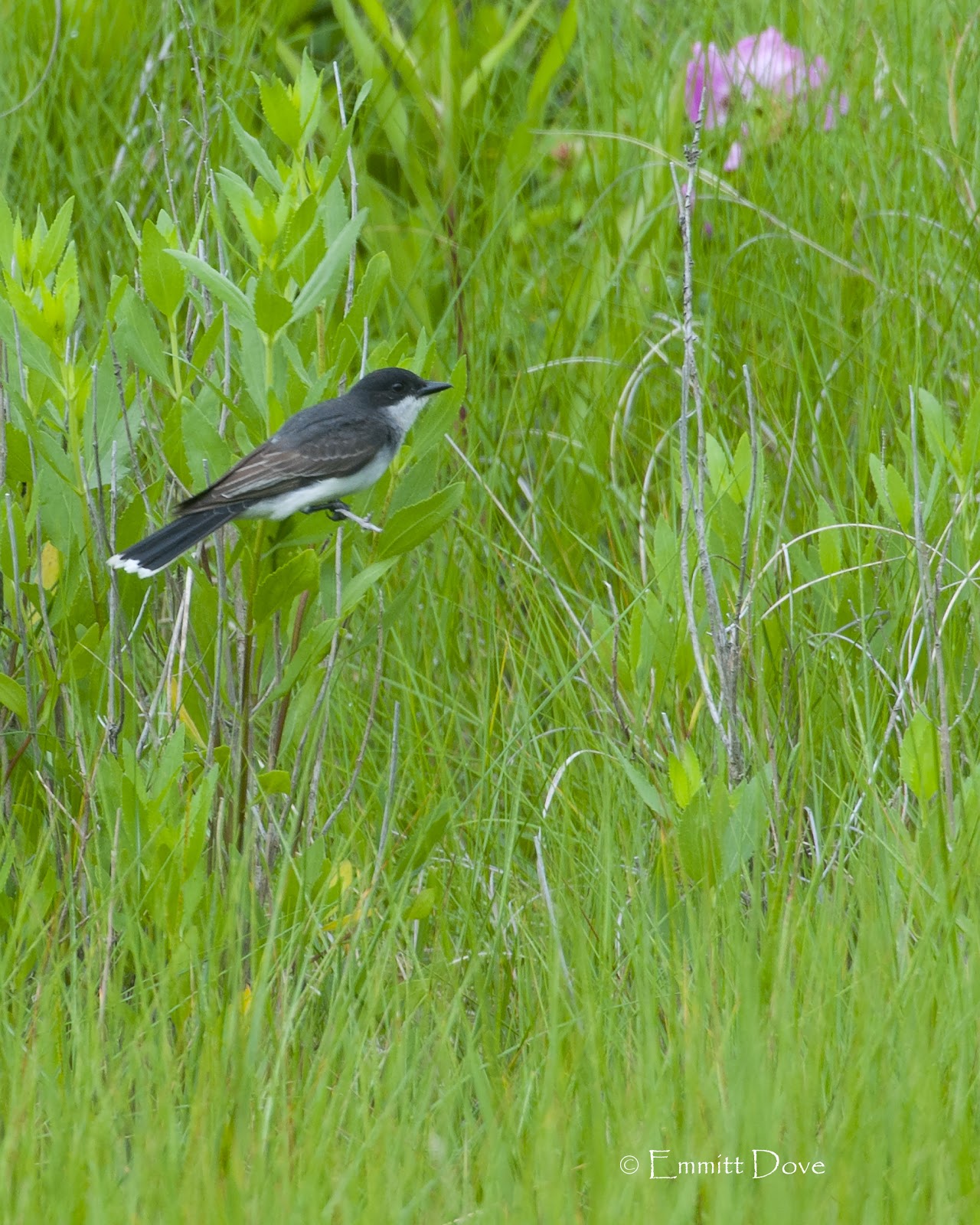

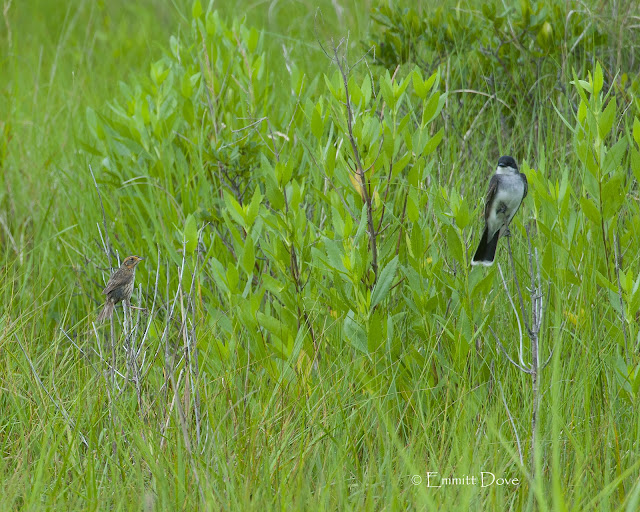
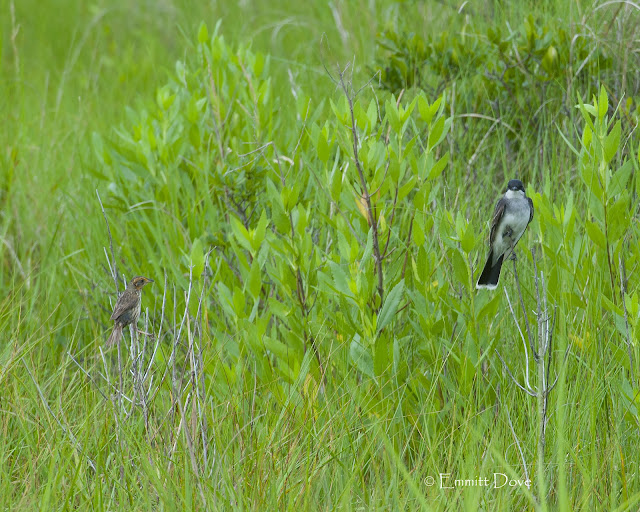

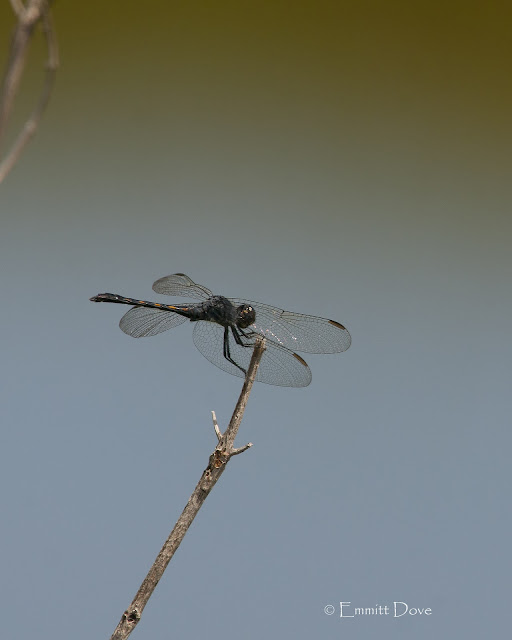
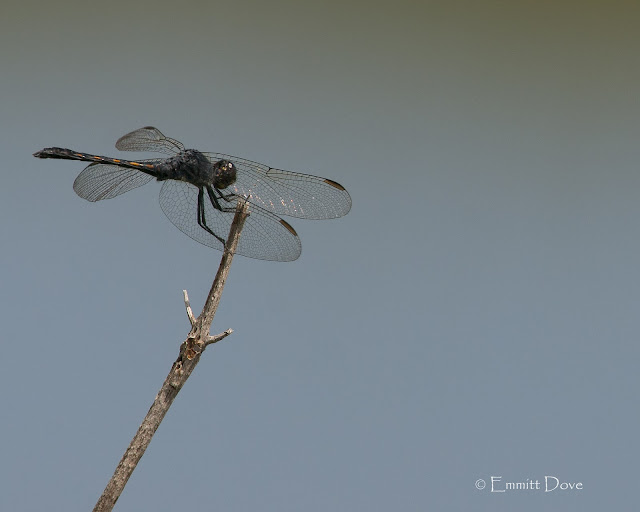
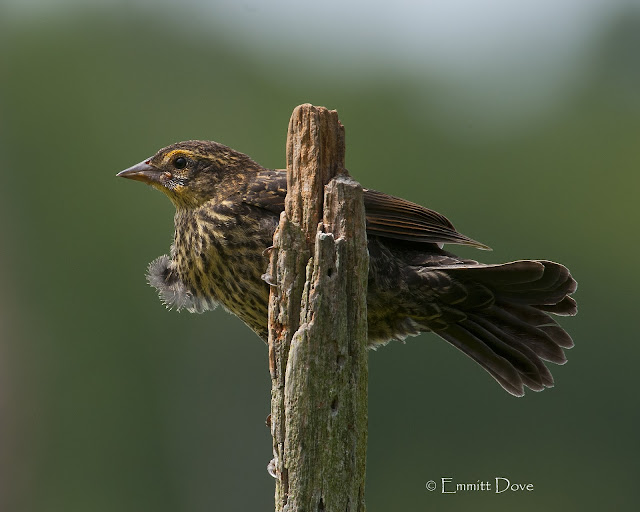
No comments:
Post a Comment